Baby Panda's Daily Habits - Feed & play with panda
Teach kids daily tasks with Baby Panda, a cute and fun way!
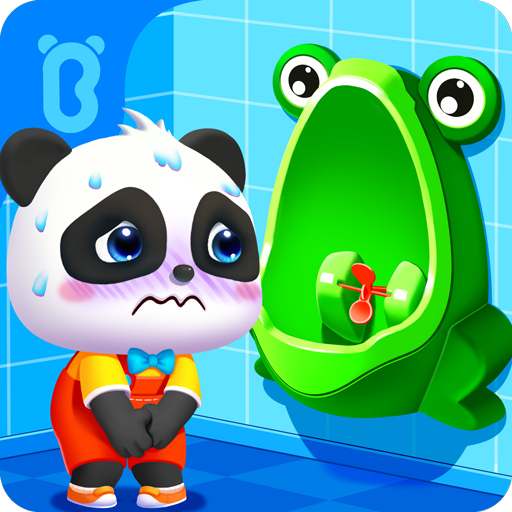
- 8.69.00.01 Version
- 4.5 Score
- 23M+ Downloads
- In-game purchases License
- 3+ Content Rating
BabyBus introduces a new game designed to help kids develop essential life habits. Join Baby Panda and delve into SIX DAILY HABITS, where children can learn to independently use the toilet, maintain a consistent sleep schedule, and adopt a balanced diet. Through engaging interactions, kids can master tasks like toilet training and cultivate positive lifestyle practices.
Discover Baby Panda's Daily Habits
Kids will not only grasp toilet training but also pick up skills like tooth brushing, facial cleansing, and hand washing in this interactive game. By following the detailed and fun instructions provided, forming healthy habits become an enjoyable experience.
The game features adorable character reactions that add excitement. Children will witness a little boy's face turning red when he needs to use the toilet or a little girl expressing delight when enjoying tasty food. These charming character responses enhance the game, capturing kids' interest in habit formation.
Discover more beneficial life habits by exploring this game with your kids. Encourage them to embrace a well-rounded diet, establish timely work-rest routines, and learn self-sufficiency in using the toilet.
Key Highlights:
- Wide range of interactive activities for developing daily habits
- Engaging characters that make habit-building fun
- Family scenarios that enhance habit-forming experiences
- Enjoyable interactions suitable for kids
- User-friendly controls suitable for children
- Available for offline play
About BabyBus
At BabyBus, we are committed to nurturing children's creativity, imagination, and curiosity. Our products are designed from a child's perspective to encourage independent exploration of the world.
BabyBus offers a diverse range of products, videos, and educational content enjoyed by over 600 million fans aged 0-8 worldwide! With a collection of 200+ children's apps, 2500+ nursery rhyme episodes and animations, and 9000+ stories covering various themes in Health, Language, Society, Science, Art, and more.
Contact us: ser@babybus.com
Gameplay:
When you first enter the game, you will see your baby panda sleeping in their crib. You need to wake them up by tapping on the play button, which is located at the bottom of the screen. Once your baby panda is awake, you can start taking care of them.
You will see a toolbar at the bottom of the screen with several icons representing different activities. The icons are as follows:
1. Bath Time: Your baby panda needs to take a bath every day. Tap on the bath time icon to take your baby panda to the bathroom. You will see a bathtub with bubbles in it. Tap on the panda to start washing them. Use the soap and sponge to clean the panda, rinse them with water, and dry them with a towel.
2. Dress Up: After bath time, it's time to dress up your baby panda. Tap on the dress-up icon to select an outfit for your panda. You can choose from a variety of clothes, shoes, and accessories. Once you have dressed up your panda, tap on the checkmark to save the outfit.
3. Breakfast: It's important to give your baby panda breakfast every morning. Tap on the breakfast icon to take your baby panda to the kitchen. You will see a table with food on it. Drag the food items to the panda's plate, and tap on the panda to feed them.
4. Brush Teeth: After breakfast, it's time to brush your panda's teeth. Tap on the brush teeth icon to take your baby panda to the bathroom. You will see a toothbrush and toothpaste. Tap on the panda to start brushing their teeth. Be sure to brush all the teeth and rinse their mouth with water.
5. Playtime: Your baby panda needs some playtime every day. Tap on the playtime icon to take your baby panda to the playroom. You will see several toys on the floor. Drag the toys to the panda to play with them. You can also tap on the panda to make them dance and sing.
6. Take a Nap: After playing, your baby panda will get tired and need to take a nap. Tap on the take a nap icon to take your baby panda to their crib. Tap on the panda to make them sleep. After a few minutes, your baby panda will wake up refreshed and ready to play again.
7. Clean Up: Your baby panda needs to learn how to clean up their toys after playtime. Tap on the clean-up icon to take your baby panda to the playroom. You will see several toys on the floor. Drag the toys to the toy box to put them away. Your baby panda will learn to clean up their toys after playing.
Toddler Daily Routine with a Sample Schedule
by Iva G. Livingston
With a toddler at home, a toddler daily routine with a working daily schedule is a must. Not only because toddlers need a daily routine for their healthy development, but also because we as parents need to keep our sanity for everybody’s well-being. And it can get so messy without one. Don’t get me wrong. It can get very messy with a daily schedule too.
But, overall, establishing a routine for your family helps you create a structured and nurturing environment, so everybody stays healthy and happy. However, it’s essential to be flexible and adapt your daily routine as it needs to accommodate changes in your and your toddler’s needs or circumstances.
As a mother, establishing a daily routine for my 2-year-old was indeed crucial for maintaining structure and stability in our day-to-day lives.
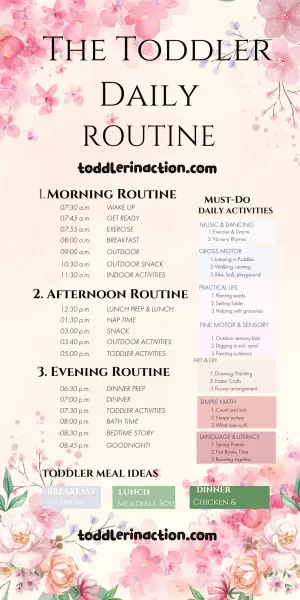
Should toddlers have a daily routine? Do 2 year-olds need a routine?
Yes, toddlers need a routine in their daily lives. Firstly, toddlers thrive on consistency and predictability. A working daily schedule makes them feel secure and comfortable because they know what to expect throughout the day.
Secondly, a daily routine helps your toddler to establish healthy habits. Just imagine daily life with a toddler without regular mealtimes, bedtime, and basic hygiene practices. A mess!
Thirdly, having a consistent routine helps your toddler to become more independent. They need to learn not only to anticipate what happens next but also to participate in daily activities. It’s just great when they know that they can get dressed alone, and help with chores. And we need that.
Furthermore, a consistent daily schedule can help regulate your toddler’s sleep pattern. In this way, your toddler will be more rested, in a better mood and probably will listen to you more.
Another benefit of establishing a toddler daily routine is that routines provide opportunities for learning and skill development. It will be so much more easier for your toddler to start preschool or homeschool preschool if you have an established daily schedule at home.
And last but not least, knowing what to expect can reduce anxiety and frustration for your toddler. They will feel more in control of their environment and activities.
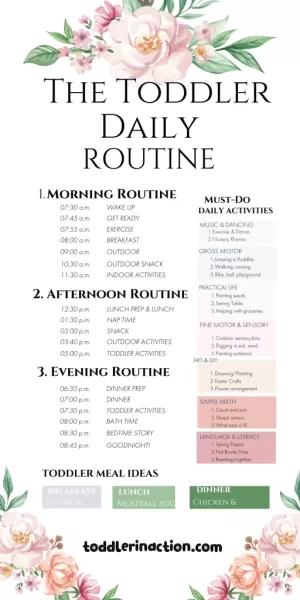
How to establish a daily routine with a toddler?
For me it was not easy at all to establish a working daily routine with my toddler. I work from home, we spend all day together. It felt in the beginning as if I got promoted in life with a few extra jobs – from cleaning our house and cooking healthy meals for a toddler to teaching a little preschooler. I still had the same 24 hours and the same payment though. So, I needed to be very thankful every day for having the chance to be a mom, otherwise, I felt I would go down.
So, here is my best advice – be thankful, consistent, patient, and flexible. Here are some steps to help you create and maintain a routine:
- Identify Key Activities For Your Toddler Daily Routine
Firstly, determine the essential activities that you need to incorporate into your toddler’s routine, such as mealtimes, naptime, playtime, and bedtime. Then write down the want ones – that’s where you create a space for yourself – exercise, rest.
- Set Regular Times
Establish consistent times for each activity to occur each day. Toddlers thrive on predictability, so when you set times for meals, naps, and bedtime helps create a sense of structure.
- Create Visual Cues
Use visual cues such as charts, pictures, or a daily schedule to help your toddler understand and anticipate the routine. You can involve your toddler in creating the visual cues by allowing them to choose pictures or colors for each activity.
- Be Flexible
While consistency is essential, it’s also important for you and your toddler to be flexible and adapt the routine as needed. Your toddler’s needs and preferences may change over time, so be open to making adjustments to the routine as necessary.
- Start Slowly
If you’re implementing a new routine or making changes to an existing one, start slowly and gradually introduce the new activities or schedule. This allows your toddler to adjust gradually and reduces resistance to change.
- Be Patient
It may take some time for your toddler to adapt to the new routine, so be patient and give them time to get used to it. Offer encouragement and praise for following the routine and participating in activities.
- Stick to the Routine
Once you’ve established a routine, try to stick to it as much as possible. Consistency is key to helping your toddler feel secure and comfortable with the routine.
- Include Flexibility
While it’s important to have a routine, it’s also important to allow for flexibility when necessary. Unexpected events or changes may occur, so be prepared to adjust the routine as needed without causing too much disruption.
Remain patient and consistent, even if it’s not easy at first. This way you can establish a routine that works well for both you and your toddler, providing structure and stability in your daily lives.
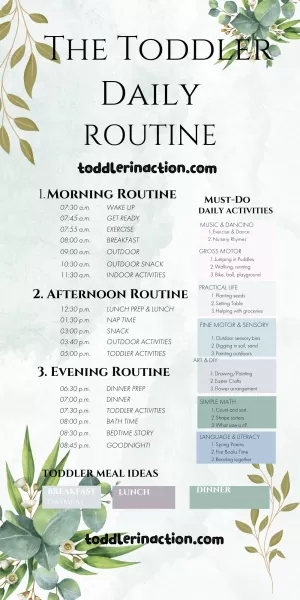
What is a good daily schedule for a 2-year-old?
Here’s a typical routine that works well for us
- Morning:
8:00 AM Wake Up
My little one usually wakes up around 8:00 AM. We start the day with our good morning hugs, singing the two Super simple songs This is the way we get up and This is the way we get dressed while getting ready. It helps enormously. Toddlers love songs that make sense and what better way to start the day than with a song?
8:30 AM Breakfast
After getting dressed, we head to the kitchen for breakfast around 8:30 AM. I try to make something nutritious and quick like oatmeal with fruit, a smoothie, or oatmeal pancakes.
9:00 to 10:30 AM Playtime, Early Math & Reading
From 9:00 to 10:00 AM, we engage in educational playtime activities and reading simple books together, such as puzzles, building blocks, or imaginative play. You can get plenty of ideas from this list of 99+ daily toddler activities. This is a fun and interactive way for my toddler to explore and learn.
10:15 AM Snack
Around 10:00 – 10:30 AM, we have a healthy snack break together. It could be a smoothie, sliced fruits, yogurt, or cheese.
10:30 to 12 PM Outdoor Time
Weather permitting, we venture outside for fresh air and outdoor play around 10:30 AM. Whether it’s a walk to the park, playground or simply playing in the backyard, outdoor time is essential for our physical and mental well-being.
12:00 PM Lunch
We return home for lunch around 12:00 PM. We prepare simple and healthy meals, that are easy to make and quick to prepare.
1:30 PM Naptime
Around 1:30 PM, it’s time for a nap. While my little one naps, I take advantage of some quiet time to catch up on work, and household chores, or simply relax and recharge.
3:00 PM Snack
After waking up from the nap, we enjoy a light snack together around 3:00 PM.
3:30 to 6:00 PM Gross Motor and Fine Motor Activities, Outdoor & Free Play
From 3:30 to 6:00 PM, we engage in more free playtime activities indoors or outdoors depending on the season and the weather. This may include gross motor activities, fine motor activities, arts and crafts, sensory play, or dancing and singing.
6:00 PM Dinner Preparation
We prepare dinner together and my little one helps me with simple tasks like washing veggies, peeling with a safe peeler, or stirring ingredients in a bowl. The good thing is that healthy meals are usually quick to cook and easy to prepare. Our family weeknight meals take about 15-30 min to prepare.
6:30 to 7:00 PM Dinner
We sit down for a family dinner around 7:00 PM and talk, my toddler wants to watch a cartoon like Bluey or Peppa Pig.
7:45 PM Bath Time
After dinner, my little one has their night-time routine with a bubbly bath and some songs.
8:30 to 9:00 PM Bedtime
By 8:30 PM, it’s time to start the bedtime routine. We read a bedtime story or two, sing and try to fall asleep. Goodnight!
What should a 2-year-old be doing every day?
To sum it up, your toddler should get enough gross motor exercise, eat healthy meals, practice self-care, help at home, play, laugh and learn. These must-do activities make sure that your little one thrives.

What is a typical schedule for a 2-year-old?
A typical schedule for a 2-year-old may vary depending on the child’s individual needs, preferences, and family routines. However, here is a general outline of a daily schedule for a 2-year-old.
- Morning
Wake Up: Between 6:00 AM and 9:00 AM
Breakfast: Around 7:00 AM to 9:30 AM, consisting of a balanced meal with foods like cereal, fruit, yogurt, or toast.
Playtime: From 8:30 AM to 10:00 AM, engaging in activities such as free play, puzzles, coloring, or outdoor play in a safe environment.
Snack: Around 10:00 AM to 10:30 AM, offering a small, nutritious snack to keep energy levels up until lunchtime.
- Noon
Lunch: Between 11:30 AM and 1:30 PM, having a healthy meal.
- Afternoon
Nap lasting 1 to 2 hours, usually starting around 12:30 PM to 2:00 PM.
Afternoon Activities: After waking up from the nap, engaging in quiet activities like reading books, playing with toys, or going for a walk.
Another small snack around 3:00 PM to 4:00 PM to tide over hunger until dinner.
- Evening
Dinner: Between 5:00 PM and 8:30 PM enjoying a family dinner
Bath Time: Around 6:30 PM to 8:30 PM, having a bath or shower as part of the bedtime routine.
Bedtime Routine: Starting around 7:00 PM to 9:00 PM, engaging in calming activities like reading a bedtime story, cuddling, or singing songs.
Bedtime: Typically between 7:30 PM and 9:30 PM.
It’s important to note that every child is different. Your schedule may vary based on factors such as individual sleep needs, appetite, and temperament. Additionally, flexibility and adaptation to changes in routine are essential to accommodate growth and developmental milestones.
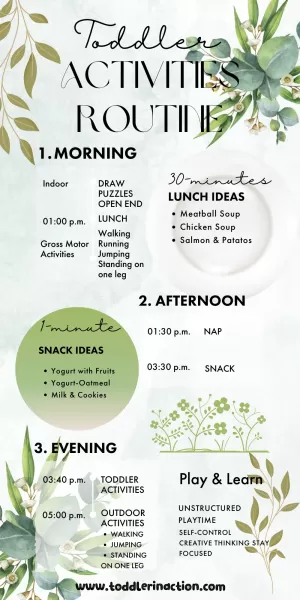
Sample Toddler Daily Schedules
If you need some inspiration or help check out our Sample Toddler Daily Schedules or visit our shop where you can find free and fillable Daily Toddler Schedule Templates.
Hope that helps and you find your own way to establish your own happy toddler daily routine!
- Version8.69.00.01
- UpdateSep 06, 2024
- DeveloperBabyBus
- CategoryEducation
- Requires AndroidAndroid 4.4+
- Downloads23M+
- Package Namecom.sinyee.babybus.selfcare
- Signature8d6143e7948c49453766467bef4dc328
- Available on
- ReportFlag as inappropriate
-
NameSizeDownload
-
102.15 MB
-
104.17 MB
-
75.21 MB


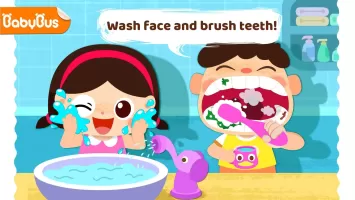
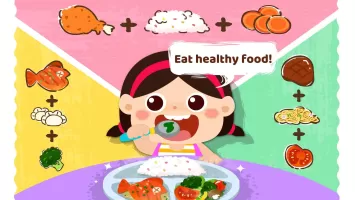

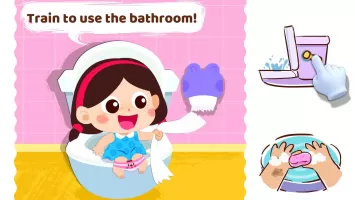
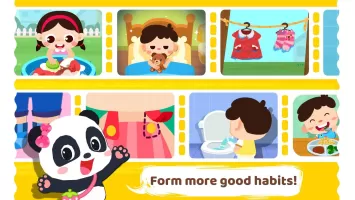
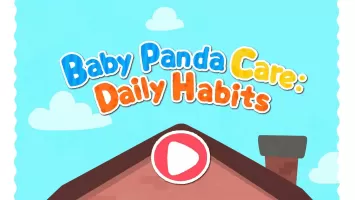
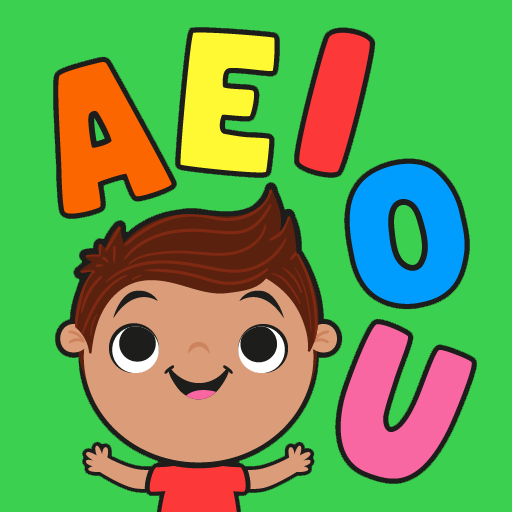
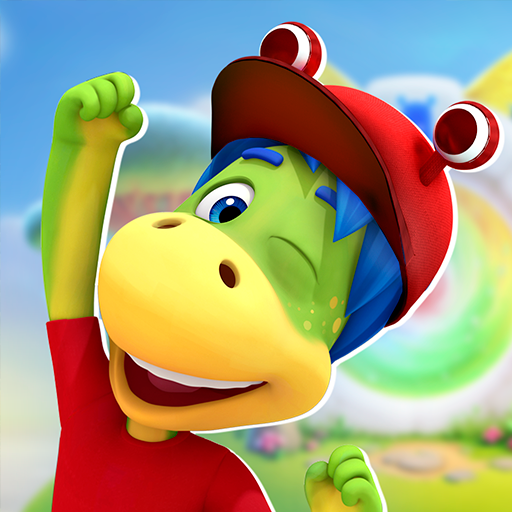


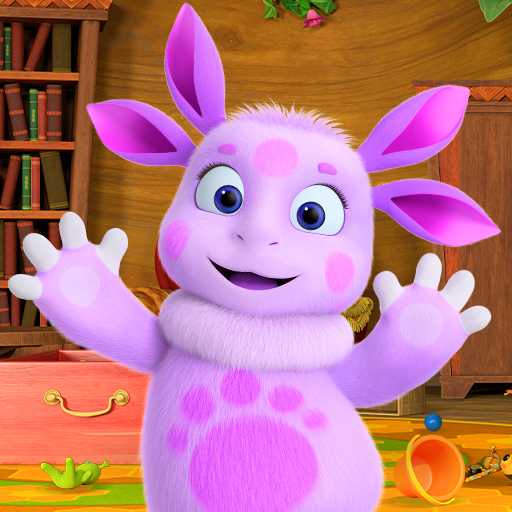
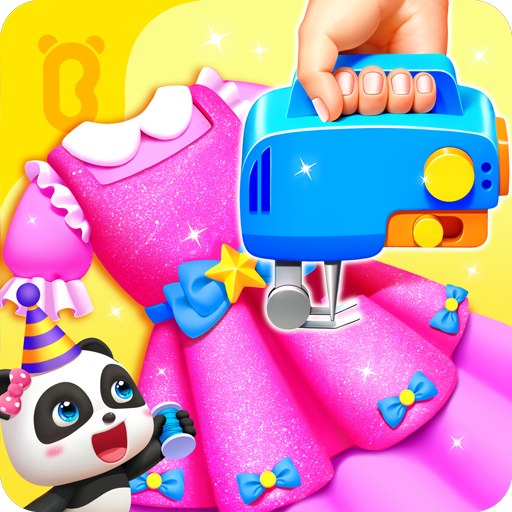
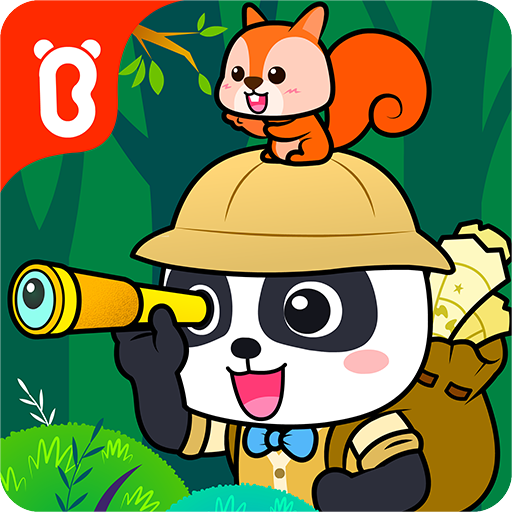
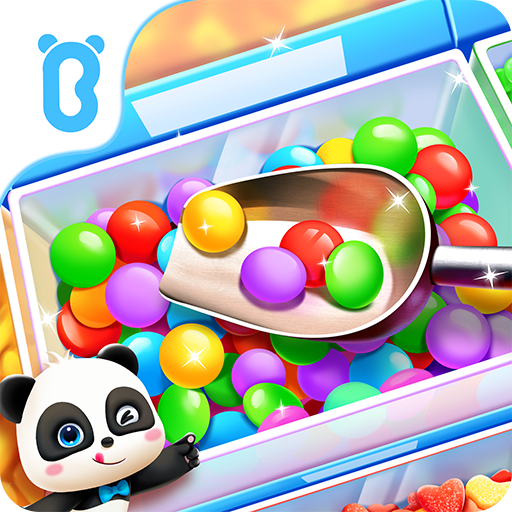
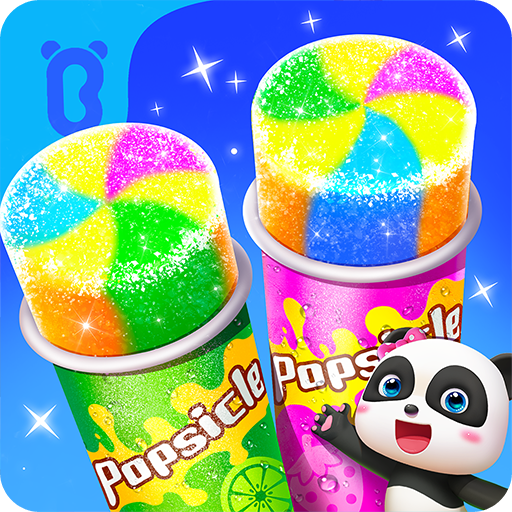
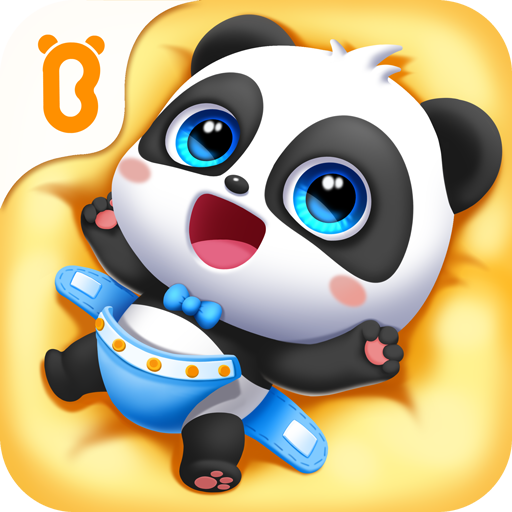
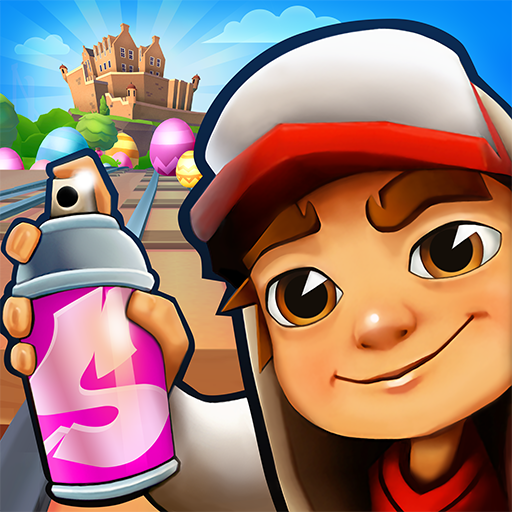








graphics are great
gameplay is fun
off-line gameplay suggested
get board easily